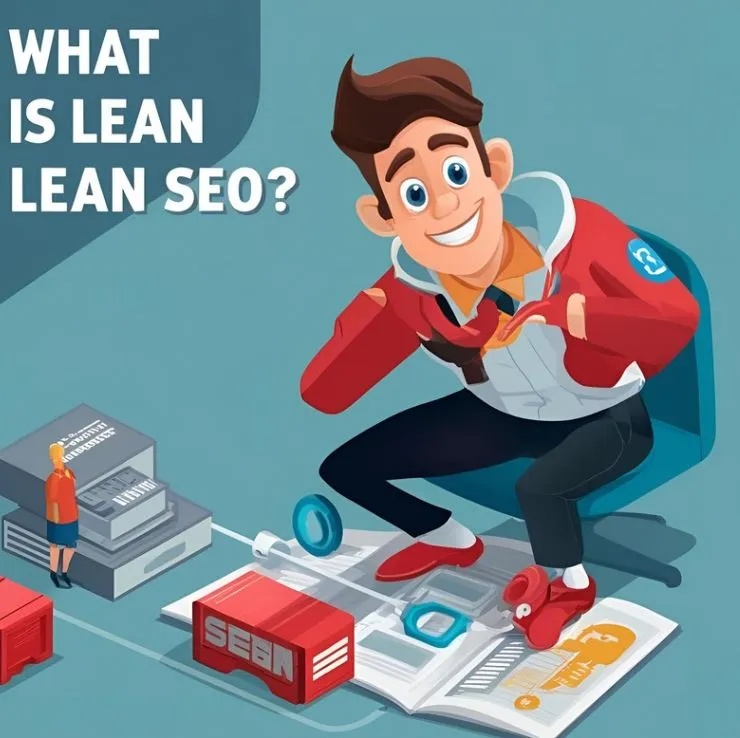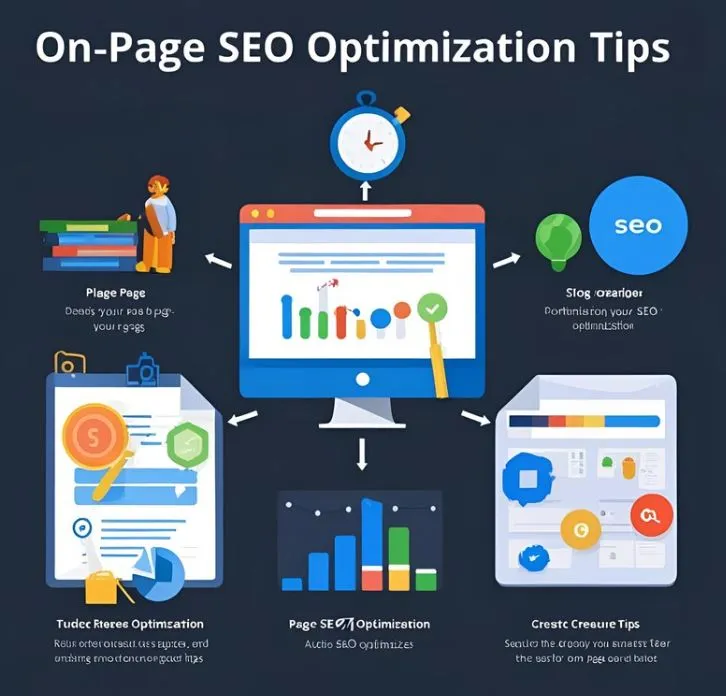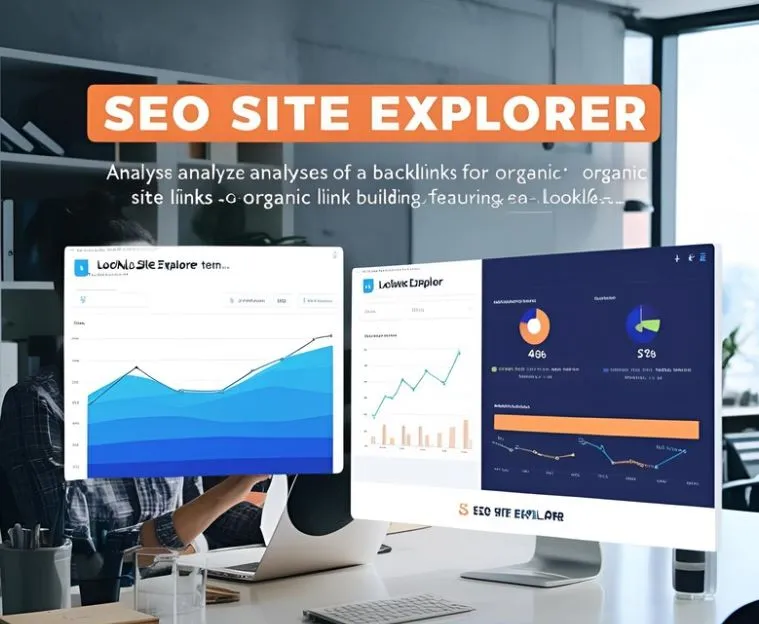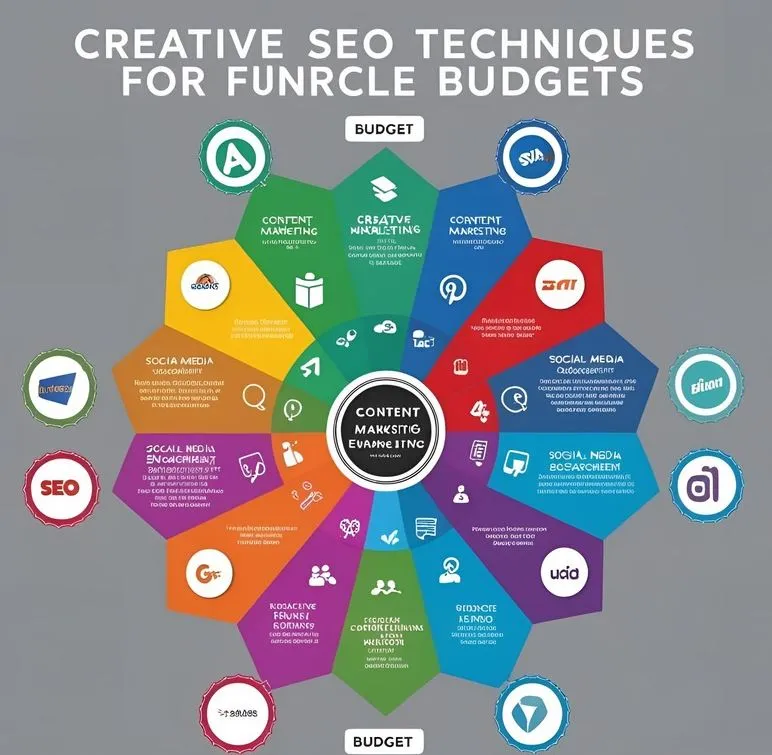
SEO doesn’t have to be complicated, expensive, or overwhelming.
With Lean SEO, you can grow your organic traffic, stay agile, and keep your marketing budget lean. Skip the noise. Focus on impact.
What Is Lean SEO?
Lean SEO is the art of ranking higher on search engines by doing only the most effective, high-impact SEO tasks. Instead of trying to do everything, it focuses on:
-
Speed over perfection
-
Real user intent over vanity metrics
-
Smart tools and automation
-
Continuous improvement through rapid feedback loops
It borrows principles from Lean Startup methodology: test fast, learn faster, and spend wisely.
The Goal?
Do less. Grow more. Waste nothing.
Traditional SEO vs Lean SEO
| Traditional SEO | Lean SEO |
|---|---|
| Large upfront investment | Small, strategic steps |
| Massive audits and 50+ “must-do” tasks | Only what impacts ranking and UX |
| Slow to execute | Fast, iterative, data-driven |
| Heavy reliance on agencies | DIY-friendly and tool-assisted |
| Focus on “ranking” | Focus on traffic, conversions, and ROI |
Traditional SEO often feels like building a skyscraper with an unlimited blueprint. Lean SEO is building a solid, smart house that serves its purpose—and scales when needed.
The 5 Essential Pillars of Lean SEO
To succeed with Lean SEO, you don’t need to do everything. You just need to master the essentials. Here are the five core pillars that deliver 80% of the results with 20% of the effort:
1. Keyword Prioritization, Not Over-Optimization
Focus only on keywords that your audience is actually searching for—and that your site has a real chance to rank for. Think “low-hanging fruit” before trying to rank for “SEO.”
2. High-Impact Content Creation
Publish content that answers real questions, solves problems, or provides unique value. Lean SEO skips fluff and prioritizes clarity, speed, and intent alignment.
3. Technical Health Basics
No need to obsess over every technical detail. Just get the fundamentals right: fast loading, mobile-friendly, indexable pages, and clean internal linking.
4. Smart Link Building
Forget spammy backlinks or endless outreach. Instead, aim for a few high-authority links through useful content, partnerships, or digital PR tactics.
5. Rapid Testing & Analytics
Use tools like Lookkle, Search Console, or GA4 to test, learn, and improve. Lean SEO is iterative small wins compound over time.
Keyword Prioritization, Not Over-Optimization
One of the biggest mistakes in traditional SEO is trying to optimize for too many keywords at once, or focusing on high-competition keywords that are nearly impossible to rank for without a large budget.
The Lean SEO approach flips this mindset: less is more.
What Does "Keyword Prioritization" Mean?
It means carefully selecting the most relevant, realistic, and valuable keywords for your site, instead of trying to rank for everything. The goal isn’t to show up everywhere, but to rank where it matters most.
In other words:
- You don’t need 500 keywords.
- You need the 5–20 that actually drive qualified traffic.
What Is "Over-Optimization"?
Over-optimization happens when you force a keyword into every possible place titles, URLs, meta descriptions, headers, body text, until the content sounds robotic or unnatural.
This not only fails to help your SEO, it can actually hurt your rankings.
Google favors content that reads naturally and provides a good user experience. Keyword stuffing and awkward phrasing signal the opposite.
How to Apply This Pillar in Lean SEO
Here’s a simple Lean framework to prioritize keywords without getting overwhelmed:
1. Focus on Intent, Not Just Search Volume
A keyword with lower volume but high buying or action intent (e.g., “best mini PC for developers”) is much more valuable than a generic term like “PC”.
2. Evaluate Difficulty Before You Commit
Use tools like Lookkle, Ahrefs, Ubersuggest, or SEMrush to see if you have a realistic chance to rank. If your site is new or small, avoid going after ultra-competitive keywords dominated by big brands.
3. Group Keywords into Clusters
Organize related keywords into topic clusters. This allows you to create strategic, structured content instead of dozens of thin or duplicate pages.
4. Map Each Keyword to Clear Intent
Each target keyword should match a specific intent: informational, commercial, transactional, or navigational. Your content should be crafted with that intent in mind.
5. Review and Adjust Regularly
Keyword strategy isn’t one-and-done. In Lean SEO, you review rankings, CTRs, and traffic monthly to refine your keyword focus and content.
Example of Keyword Prioritization Using Lookkle’s Keyword Research Tool
Let’s say you're launching a blog for a mini PC e-commerce site, and you want to attract organic traffic from users who are ready to buy or compare products.
Step 1: Start with a Seed Keyword
We enter a broad term like:
"mini PC"
into Lookkle's Keyword Research Tool.
Lookkle returns a list of related keywords, including:
| Keyword | Search Volume | Competition | Intent |
|---|---|---|---|
| mini PC | 60,500 | High | Informational |
| best mini PC for gaming | 3,200 | Medium | Commercial |
| mini PC for home office | 1,100 | Low | Commercial |
| cheap mini PC under 300 | 900 | Medium | Transactional |
| fanless mini PC | 700 | Low | Niche/Technical |
| mini PC vs desktop | 1,600 | Medium | Informational |
Step 2: Apply Lean Keyword Prioritization
Instead of targeting “mini PC” (high volume, high competition), we filter for keywords with:
- High intent (commercial/transactional)
- Lower difficulty (realistic to rank for)
- Decent volume for niche topics
From the list above, Lookkle helps us identify priority keywords like:
-
“mini PC for home office” → Low difficulty, commercial intent
-
“cheap mini PC under 300” → Medium difficulty, high buying intent
-
“fanless mini PC” → Low difficulty, technical/niche interest
These keywords offer a better ROI for Lean SEO because:
-
They're easier to rank for
-
They match specific user needs
-
They have conversion potential
Step 3: Group and Plan Content
With these keywords, you could build a focused content plan like this:
| Page | Target Keyword | Supporting Keywords |
|---|---|---|
| Buying Guide | mini PC for home office | best mini PC for remote work, quiet mini PCs |
| Product Roundup | cheap mini PC under 300 | affordable mini PC, budget mini PC reviews |
| Technical Guide | fanless mini PC | silent mini PC, mini PC with passive cooling |
High-Impact Content Creation: Do Less, Deliver More
In Lean SEO, content isn’t about publishing more—it’s about publishing smarter.
Traditional SEO might push for a high volume of blog posts, long-form articles stuffed with keywords, and endless updates. The result? Lots of generic, bloated content that no one reads (and Google ignores).
High-Impact Content Creation is the opposite. It focuses on:
- Relevance
- Clarity
- Utility
- Speed to publish
- SEO and UX alignment
What Is High-Impact Content?
It’s content that serves a clear purpose and delivers measurable results, whether that’s traffic, engagement, backlinks, or conversions.
This could be:
-
A 500-word tutorial that ranks #1 because it solves a real problem
-
A comparison table that helps users make a buying decision
-
A landing page targeting a long-tail keyword with high conversion intent
-
A visual checklist that earns backlinks and shares
It's not about word count or fancy formatting, it's about usefulness.
5 Lean Principles for High-Impact Content Creation
1. Start With Intent, Not Ideas
Ask: What is the user trying to do with this search?
Is it to learn, compare, buy, solve a problem? Your content should directly fulfill that need.
2. Solve One Problem per Page
Avoid trying to cover everything. Each page or post should answer one main question or target one specific goal. This makes your content clearer and more SEO-friendly.
3. Make It Scannable and Actionable
Use:
-
Headings (
<h2>,<h3>) -
Bullet points
-
Tables
-
Callouts and CTAs
Make your content easy to digest, especially on mobile.
4. Publish Fast, Then Improve
Don’t wait for perfection. In Lean SEO, speed matters.
Launch a minimum viable page, then monitor how it performs (using tools like Lookkle) and improve based on real data.
5. Repurpose & Reuse
Turn a blog post into:
-
A Twitter thread
-
A LinkedIn post
-
A video script
-
A downloadable checklist
One piece of high-impact content can power multiple channels.
Real-World Example
Target Keyword: best fanless mini PC for home office
Why This Keyword?
-
Low competition
-
Transactional + Commercial intent
-
Niche audience (people working remotely who want a silent PC)
-
~900 monthly searches (according to Lookkle’s Keyword Research Tool)
The Lean SEO Strategy
- Goal:
Create one focused content page that helps users choose the right fanless mini PC, without writing a 3,000-word “ultimate guide.”
- Content Format:
Title:
Top 5 Fanless Mini PCs for a Silent Home Office in 2025
Structure:
-
Intro (100–150 words)
Briefly explain why noise matters for remote work and what a fanless PC is.
-
Mini Comparison Table
-
Model
-
CPU
-
RAM/Storage
-
Price
-
Best For (e.g., “Silent multitasking”, “Budget pick”, etc.)
-
-
Individual Mini Reviews (100–120 words each)
Focus on real benefits: noise level, power efficiency, desk space. -
Quick FAQ
-
Are fanless PCs powerful enough for work?
-
How do they stay cool?
-
Best for Zoom, email, office apps?
-
-
CTA:
“Need help picking the right one? Use our Mini PC Finder Tool”
Technical Health Basics
Get the essentials right and move on
In traditional SEO, it’s easy to fall into the trap of obsessing over every micro-technical detail: canonical tags, hreflang issues, crawl budgets, schema nesting, server log audits...
But in Lean SEO, we don’t aim for “perfect.”
We aim for clean, fast, indexable, and user-friendly.
Key Idea:
You don’t need a technical masterpiece — you need a technically solid foundation that doesn’t block your growth.
The 4 Technical Essentials You Must Get Right
Here are the non-negotiables in Lean SEO:
1. Fast Page Loading (Especially on Mobile)
Why it matters:
Google uses page speed (especially mobile) as a ranking signal. More importantly, slow pages frustrate users and increase bounce rates.
What to do (Lean style):
-
Compress images (WebP, lazy loading)
-
Minify CSS/JS
-
Use lightweight themes/frameworks
-
Host on fast servers or CDNs
Good enough benchmark:
Core Web Vitals pass + load in < 2.5 seconds
2. Mobile-Friendly Design
Why it matters:
60%+ of organic traffic is mobile.
Google uses mobile-first indexing, meaning it crawls and evaluates your mobile version first.
Quick wins:
-
Use responsive design (Bootstrap 5 or similar)
-
Make buttons and fonts legible on small screens
-
Avoid intrusive pop-ups or sticky elements
Test it with:
3. Indexable Pages
Why it matters:
If Google can't find or index your content, it doesn’t exist, no matter how great it is.
Ensure:
-
No accidental
noindexor robots.txt blocks -
Proper sitemap.xml submitted to Google Search Console
-
Clean URLs (avoid ?id=123&ref=xyz type noise)
-
Avoid JavaScript-heavy pages that hide content from bots
4. Clean Internal Linking
Why it matters:
Google and users rely on internal links to navigate your site and understand its structure.
Make sure to:
-
Link to key pages naturally in content
-
Avoid orphan pages (no links pointing to them)
-
Use descriptive anchor text (no "click here")
What You Don't Need to Obsess Over (Yet)
In a Lean SEO stage (especially early on), skip or postpone:
-
Schema markup for every type of object
-
Multilingual hreflang setups (unless you target multiple countries)
-
Deep server log analysis
-
Complex canonical chains
-
Custom JS tracking scripts unless required
Smart Link Building
Traditional link building often means one thing:
- Cold outreach, mass emails, directories, guest post farms, or even buying links.
That’s not only exhausting, it’s risky, expensive, and inefficient.
Lean SEO takes a smarter route:
You don’t need hundreds of backlinks. You need a handful of high-quality ones that move the needle.
What Is Smart Link Building?
It’s the practice of earning links naturally by creating content that’s genuinely valuable, then using low-effort, high-leverage strategies to get it seen by the right people.
The Lean SEO Mindset:
-
No begging for links
-
No spammy outreach
-
No paid link schemes
-
Focus on usefulness, authenticity, and leverage
3 Core Tactics in Smart Link Building
1. Useful, Referable Content
This is content that people want to link to because it:
-
Explains a process better than anything else
-
Includes unique data or comparisons
-
Solves a niche problem clearly
-
Offers templates, tools, calculators, or visuals
Example (Mini PC Niche):
Create a comparison chart of the 10 quietest mini PCs tested for decibel levels — include your own data or real-world usage.
Why it gets links:
Tech bloggers, reviewers, and even e-commerce sites love linking to unique comparisons and tools.
2. Partnerships & Collaborative Content
Build win-win relationships with:
-
Niche influencers
-
Micro-reviewers
-
Relevant tool creators
-
Affiliate partners
Example:
Interview a YouTuber who reviews mini PCs, or co-create a “Top Mini PC Picks of the Year” roundup with 5 bloggers.
Result: Everyone involved links back and shares the content. Zero cold outreach needed.
3. Digital PR for SEO
Turn your content into newsworthy angles, like:
-
“Fanless mini PCs cut office noise by 70%, new study finds”
-
“Remote workers are switching to mini PCs — here’s why”
Then pitch it lightly to:
-
Niche publications
-
Industry newsletters
-
Reddit/Hacker News threads (if relevant)
Key: It must be useful or surprising, not promotional.
How Lookkle Can Help
With Lookkle’s SEO SIte Explorer, you can:
-
Find which pages attract the most backlinks (your own or competitors')
-
See which types of content get linked to most often in your niche
-
Track new links and monitor gains from your smart link efforts
Quality Over Quantity
You don’t need 100 junk links.
You need 3–10 solid backlinks from:
-
A niche YouTuber
-
A small tech publication
-
A resource list or roundup post
-
A relevant subreddit
-
A partner site’s blog
These links will give you more SEO equity than 1,000 forum signatures or blog comments ever could.
Rapid Testing & Analytics
Test fast, learn fast, improve constantly
In Lean SEO, the goal isn’t to launch a piece of content and wait six months hoping it performs.
Instead, the focus is on making data-driven decisions through continuous testing, tracking, and small improvements.
In short:
- Small wins compound.
- Fail fast, not late.
- Track everything, don’t guess.
What Is Rapid Testing in SEO?
Rapid testing means launching minimum viable content or optimizations, then measuring the performance quickly to answer:
-
Is this worth scaling?
-
Should I improve or scrap it?
-
Is it working based on real user signals?
It’s not about perfection.
It’s about continuous progress based on real-world data, not assumptions.
Essential Tools for Lean SEO Testing
1. Lookkle
Lookkle SEO Site Explorer helps you track keyword positions, traffic patterns, backlink growth, and page performance in real time.
It’s lightweight but powerful—perfect for Lean SEO workflows.
Example:
You publish a page targeting “silent mini PC for home office.”
Lookkle shows you within 3–7 days whether it’s indexing and for which keywords.
2. Google Search Console (GSC)
GSC is ideal for discovering underperforming pages or hidden keyword opportunities.
What you can do:
-
Check impressions and CTR for pages
-
Find low-hanging long-tail keywords
-
Spot indexation or crawling issues
Example:
A page shows 5,000 impressions but a 0.6% CTR.
You test a new title that’s more direct:
From “Mini PC for office” to “Best silent mini PC for remote work”
3. Google Analytics 4 (GA4)
GA4 helps you understand how users interact with your content once they land.
Use it to:
-
Analyze engagement and time on page
-
Measure scroll depth and CTA clicks
-
Spot bounce issues, especially on mobile
Example:
If a blog post has solid traffic but no conversions, test a more visible or clearer CTA in the intro section.
What Can You Test in Lean SEO?
-
Page titles and meta descriptions to improve click-through rate
-
CTA wording and placement to boost engagement
-
Content structure (lists vs. paragraphs, images vs. text-heavy)
-
Article length to find the sweet spot for your audience
-
Page speed improvements to reduce bounce
The Lean SEO Mindset: Iterate for Growth
Here’s how this looks in practice:
-
Publish 5 new blog posts in April
-
By May, track which 2 perform best
-
In June, improve only those 2 with better keywords, layout, or CTAs
-
By July, your traffic grows organically—without creating more content or building new backlinks
That’s the power of iterative SEO based on results.
What Rapid Testing Is Not:
-
Making random changes without tracking impact
-
Running A/B tests endlessly without action
-
Relying only on instinct or “best practices”
-
Waiting for perfection before publishing
Tips on SEO and Online Business
Next Articles
Previous Articles









